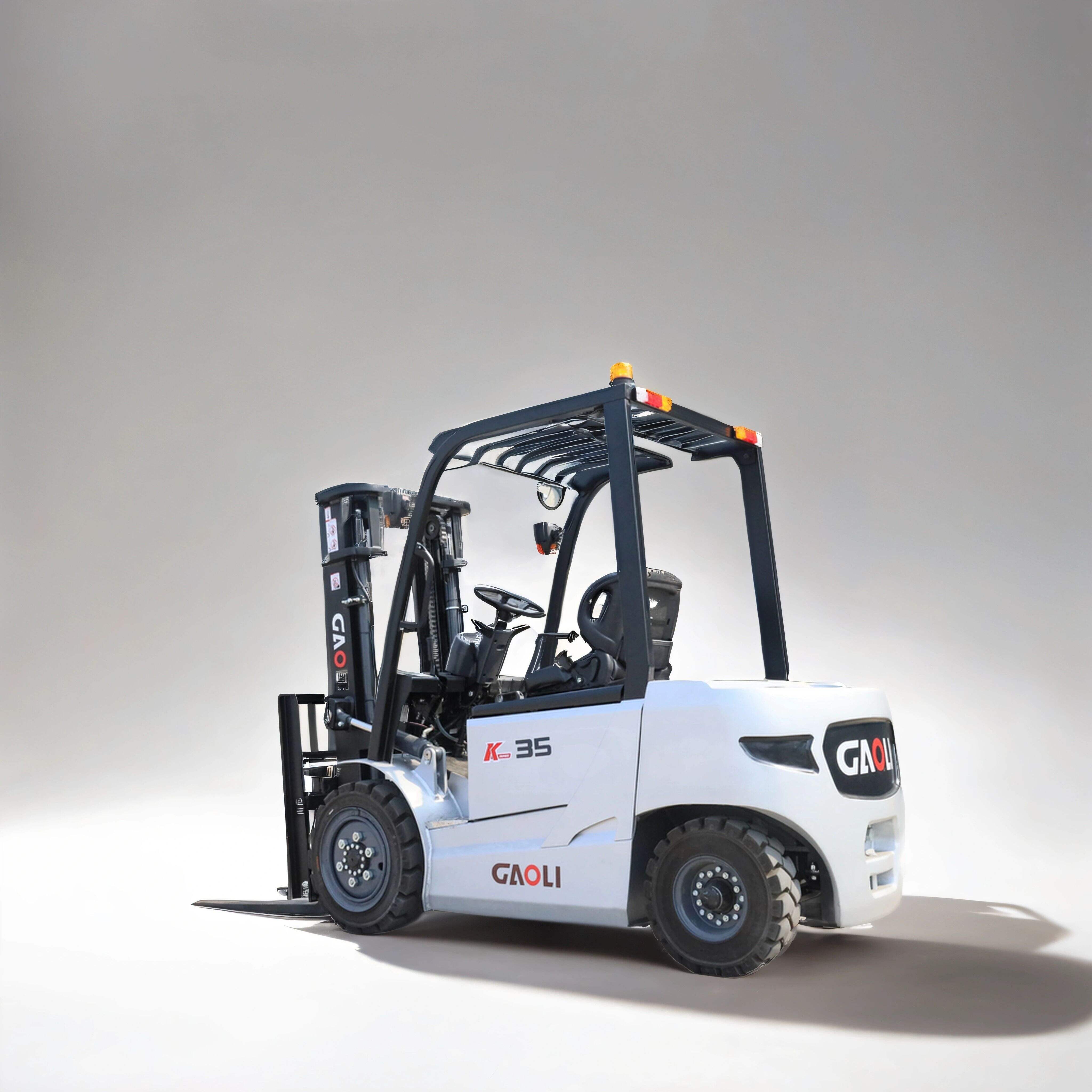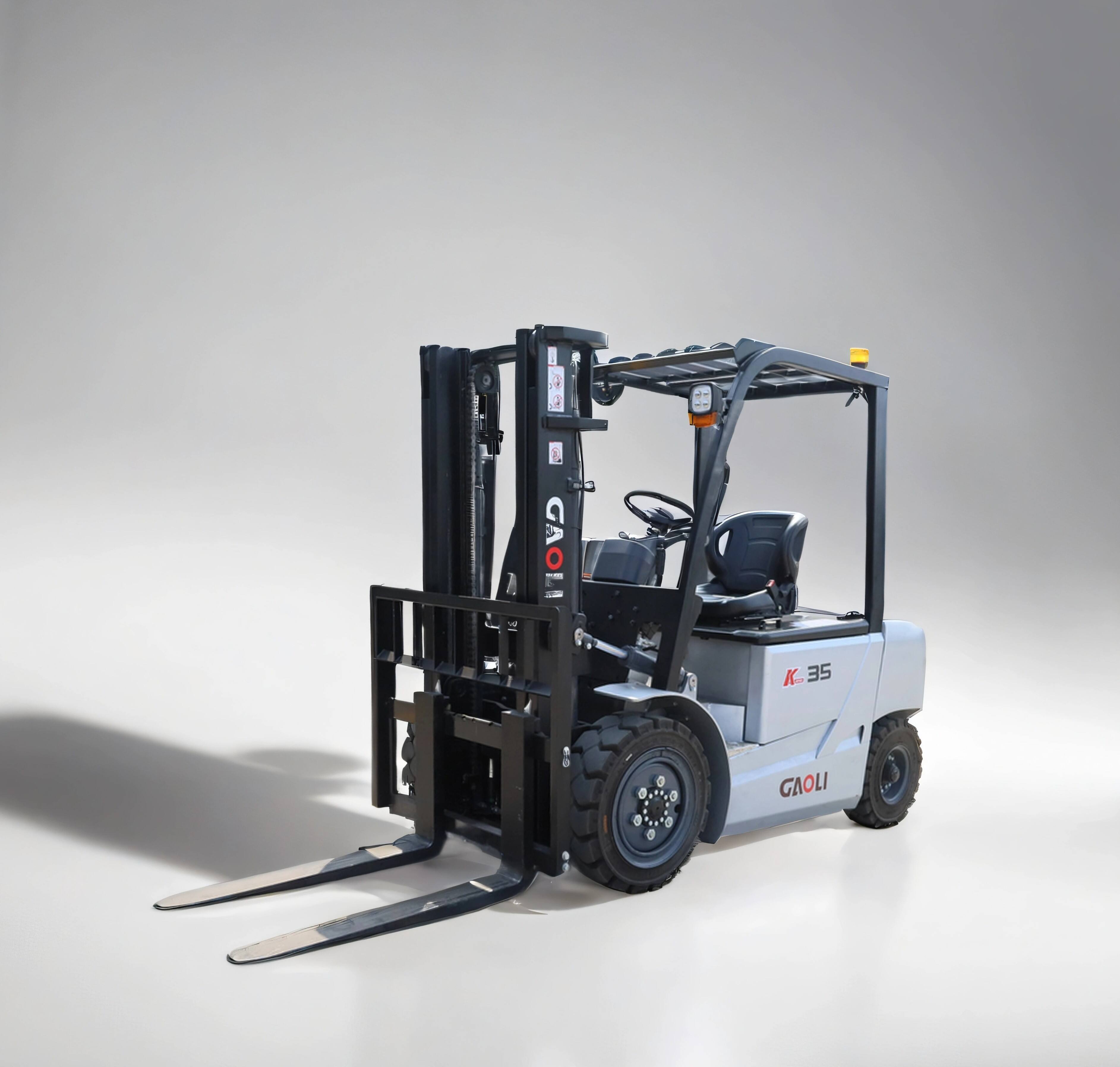What Are Counterbalance Forklift Trucks?
An integral part in material handling operations for a diverse range of industries, counterbalance forklift trucks are renowned for their exceptional, counterbalancing capability of heavy load. These lifters perform with amazing stability on all types of terrain.These pallet lifters can easily manage large, heavy loads and remain stable in the process. This stability is provided by a rear counterweight that weights down the front lifting motion. Computer Aided Design enables operators to stay in control when handling heavy loads, make accurate movements and work confidently in busy or congested areas where there is a risk of overturning.
The Core Counterbalance Principle Explained
The most fundamental concept for counterbalance forklifts is the weight placed at the rear of the truck counter balances the weight which the front forks are carrying. As a result of this design, you can expect maximum stability with loads weighing in. This balance is important because it allows for stability, which is necessary to avoid unpleasant incidents and disturbances to work. An understanding of how this principle operates is crucial for the operator, who can then carry out complex maneuvers safely and effectively. It is this combination of weight that makes counterbalance forklifts such a popular option for many different material handling situations.
Key Design Differences From Other Forklift Types
Some of the other types — such as the reach truck, the pallet jack and the stacker — lack the same build and way of operating that the counterbalance forklift has. While reach trucks use extending forks to handle loads, counterbalance forklifts carry loads directly in front of the user. This direct lift method offers improved versatility so the lifter can work virtually anywhere from offices to manufacturing facilities. In contrast to other types of forklifts, this model of the forklift increases manoeuvrability when indoors and can be used outdoors on smooth durable surfaces; therefore it has a good range of material handling applications.
Common Industrial Applications and Use Cases
Warehouses, job sites, and manufacturing plants are just a few of the places you will find counterbalance forklifts put to work. They are robust and strong and are well suited for pallet hauling, heavy loads, and even rough ground. Typical uses for these trucks include loading and unloading warehouses, stacking goods and drive -in racking in narrow aisle configuration. Their high versatility ensures they are an absolute necessity in any application where agility and accuracy are required. Whether manoeuvring around narrow warehouse aisles or on expansive construction sites, counterbalance forklifts serve their purpose.
Unmatched Maneuverability in Tight Spaces
Rear-Wheel Steering for Tight Turning Radiuses
rear wheel steering – Counterbalance forklifts are specifically designed to have rear-wheel steering, they can perform tight turns and have great control in confined areas. It would have been difficult to fit this particular design of steering in forklifts, except it reduces turning radius to such a minimum, that is key in working environments with limited space. That means that for companies in space-constrained environments, a truck that can efficiently maneuver down tight alleyways and in constricted spaces is an absolute game changer.
Outrigger-Free Design Enhancing Accessibility
Some forklifts have outriggers that can get in the way, especially in tight spaces. However, designed as such, counterbalance trucks do not require outriggers, so they also offer unobstructed access even in confided areas. This feature enables workers to easily and effectively navigate around plants/warehouses. Furthermore, it's less of a hassle to work around shelves and racks, which results in greater productivity and convenience.
Navigating Narrow Aisles and Confined Areas
When it is necessary to maneuver aisles that are quite compact, the counterbalance forklift is the best at driving small places, which is why they are also good to work with if you have warehouses and the like, where space is a very valuable asset. These vehicles are not your average forklifts because they are manufactured to handle narrow and compact areas that can provide maximum space. Their ability to perform in more difficult environments makes them a popular choice with retailers and fulfilment houses where every inch of space will be used to maximum height but where operational performance is still paramount.
Lifting Capabilities and Load Handling
Direct Ground-to-Racking Lifting Operations
Counterbalance forklifts are created so that products can be lifted directly from the ground to the racking, with storage and retrieval being simplified. If required, by its drilling facility the source 6 can be maneuvered directly out of an existing bundle and into a new bundle, or between storage buttresses and pendants, and pendants and storage. Indeed, those businesses which utilise the right loading processes with these forklifts are experiencing up to 30% improvements to operational productivity, which says something about their utility in fast-paced environments, such as warehouses and distribution centres.
Load Capacity Optimization Techniques
For improving the productivity and security of material handling operations, the knowledge of the load carrying capacity of forklift trucks is required. This entails managing to the weight limits dictated by the manufacturer of the forklift, maintaining even loading, and securing the payload while it is being transported. The majority of manufacturers offer extensive instructions to aid operators in safely maximizing load capacity of forklifts. Attending to these points can reduce accidents and improve operation productivity dramatically.
Maintaining Stability During High Lifts
Stable high lifts performance is an important factor for safety and stable operation. Load placement and weight balance are also important, and the lift truck operator should use the stability indicators to keep the machine's C/G safe. Such preventive measures minimizes the possibilities of tipping over and create safer work environments. Studies have shown that stability operator training can result in a 25% reduction in staff injuries, highlighting the huge importance in promoting this initiative and therefore creating a useable working environment.
Electric Counterbalance Forklifts: Indoor Efficiency
Emission-Free Operation for Indoor Environments
Electric counterbalance forklifts can be a game changer for indoor operations: not only do they provide zero-emission operating, but they are perfect for air quality sensitive applications. Not only is this feature eco-friendly, but also it complies with the health requirements for many industries, making for a safe work environment. The arguments for electric forklifts are being more and more reinforced by the most recent research, and evidence has been found in some studies of a 40% reduction in pollution in the average indoor workspace where the equipment has been used.
Quiet Performance and Noise Reduction Features
A typical side load motor is inefficient, noisy and is not acceptable for “quiet operation” required by retail and healthcare facilities. Thanks to TVH's state-of-the-art sound reduction features, these forklifts can operate smoothly through noise-sensitive work areas without causing disruption. Environmental Protection Agency (EPA) studies have shown that the use of low-decibel products can improve productivity, so electric counterbalance forklifts are a smart choice.
Battery Life and Energy Efficiency Considerations
A number of factors are at play when it comes to electric counterbalance forklifts, and one of them is battery life, a function of both productivity and maintenance intervals. And some models focused on energy efficiency can operate for much longer on a single charge, a fact that can slash operational costs. Energy survey data by industry shows that companies using batteries more effectively can save about one fifth of their energy costs, making battery technology and use even more attractive for indoor forklifts.
Operator-Centric Safety and Comfort Features
Enhanced Visibility Designs for Maximum Safety
Sight is an important part of forklift operation and it is seen that the safety percentage depends on it. Counterbalance Forklifts This is something counterbalance forklifts do exceptionally well, as they have been designed to maximise visibility. Important features like thin A-pillars and short hoods are key to this, allowing for better visibility and less blind spots. HARD FACTS Research has shown that these visibility improvements can lead to more than 30% reduction in accident rates in industrial operations. This significant decrease reinforces the role of design innovation enabling the safety operations to be guaranteed and decreasing risks for accidents and risk for men and goods.
Adjustable Seating and Ergonomic Control Layouts
Counterbalance forklifts design have adjustable seating and ergonomic control-positioning for operators working long shifts. These features are essential in reducing operator fatigue, especially during long working days and tough work conditions. Ergonomic research show that enhancing comfort through adjustability may increase productivity by 15%. This improved comfort benefits not only the health of the operator, but also productivity in the workplace, maintaining its level of performance even in the most demanding work conditions.
Fatigue-Reducing Features for Extended Shifts
Ergonomically incorporated in forklift design are features to reduce driver fatigue, including padded steering wheels, vibration-damping systems, and improved visibility. These added options provide for both safety and performance, allowing operators to keep up productivity over long periods. Research has proven that organizations practicing such design philosophies will see a substantial reduction in accidents per shift. This decrease indicates investment in operator comfort and fatigue helps in maintaining peak levels of job site safety and productivity.

Operational Training and Best Practices
Essential OSHA Certification Requirements
Safety and efficiency in the use of counter balance forklifts starts with ensuring you are OSHA certified. Either way, having OSHA certification is a must due to safety and compliance, and this certification requires a written exam and practical portions. This rigorous procedure highlights the significance of a comprehensive training for the protection of the operator and the place of work. (OSHA, 2013) 80% of forklift accidents could have been prevented with training which is why certification is crucial.
Daily Pre-Operational Safety Checklists
The use of daily pre-operational safety checklists is critical for detecting any related maintenance concerns prior to operating counterbalance forklifts. These lists generally relate to brakes, steering and safety apparatus of the like to avoid accidents induced by malfunctioning equipment. Businesses who use systems similar to checklists have seen a dramatic decline in accidents and a drop in the need for maintenance for reactive reasons.
Efficient Load Handling and Maneuvering Techniques
Forklift accident prevention and forklift productivity improvement depend on the skills of efficient handling and control of loads. The process of training operators in such techniques can improve the work process, whereby effective manoeuvring can increase handling abundance by up to 20%. Wellknown methods like securing the crates and checking the lifting capacity before lifting, are important for ensuring that the safety level is the same as before the change. Using such methods does not just make the workplace safer, but it also ensures that the operations run smoothly and more efficiently.
FAQ
What is the main function of a counterbalance forklift?
A counterbalance forklift's main function is to handle and transport heavy materials efficiently and safely by utilizing a counterweight to balance the load.
How does the counterbalance feature benefit forklift stability?
The counterbalance feature enhances stability by positioning a counterweight at the rear, which counteracts the weight of the load being lifted to prevent tipping.
What types of environments are ideal for electric counterbalance forklifts?
Electric counterbalance forklifts are ideal for indoor environments requiring clean air and low noise levels, such as warehouses and retail spaces.
Why is OSHA certification important for forklift operators?
OSHA certification is important because it ensures that forklift operators are trained in safety practices, which significantly reduces the risk of workplace accidents.


